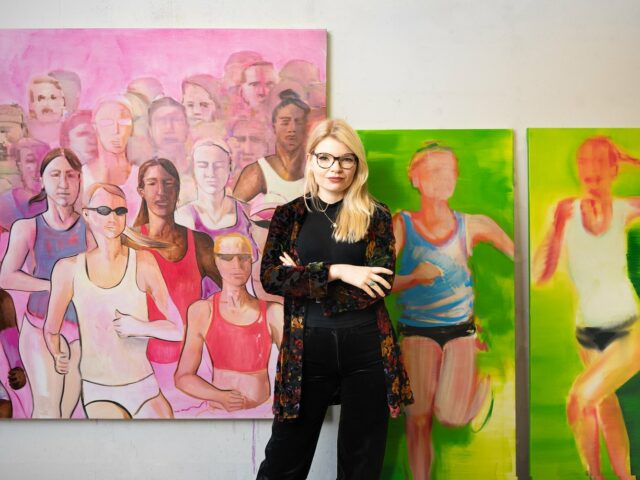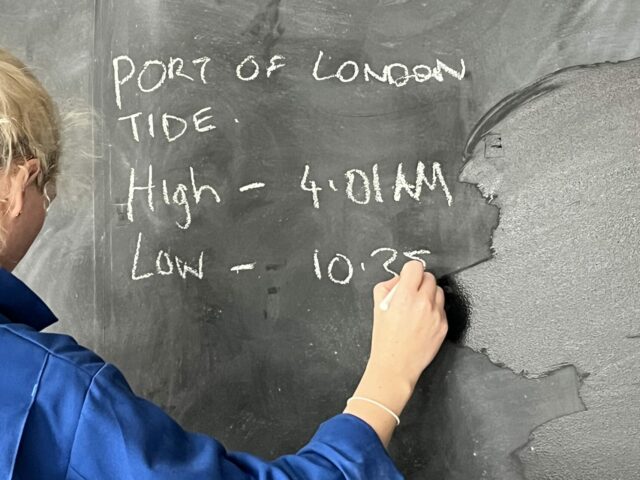Artist Spotlight: Almudena Romero
Almudena Romero is a visual artist and member of our creative community in Thamesmead working with a wide range of early and new photographic processes. Through her work, she addresses issues relating to identity, representation and ideology. This week, we caught up with Almudena to find out more about her practice, her plans for the future and her recent online photography tutorials.
Could you tell us a bit about your work as a photographer?
I am a visual artist working with a wide range of photographic processes from early printing techniques such as cyanotype, salt printing or wet plate collodion, to new technologies including 3D scanning and printing. My practice uses photographic processes to reflect on issues relating to identity, representation and ideology; such as the role of photography in the construction of national archives and identities. My work focuses on how photography affects notions of the public, the private, memory and, in general, the concept of the individual. I am interested in how perceptions of ourselves and our reality affect our existence and how photography influences these perceptions.
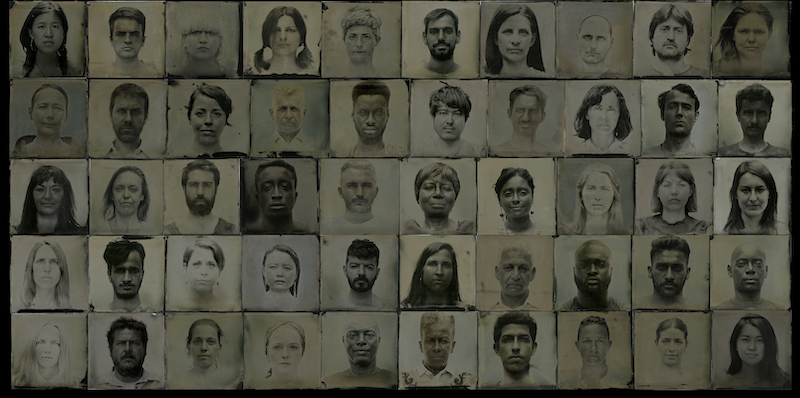
Works from Performing Identities series
You’ve recently posted some fantastic videos on YouTube explaining some of the different photographic processes that you use. Can you tell us more about that?
I am very interested in and committed to increasing people’s knowledge, and understanding of photographic processes and their engagement with them. I see public and educational programmes/initiatives as being central to the politics of my practice. Over the years, this has led me to create a variety of videos about my practice and the processes that I use. I am definitely not a secretive person; I find joy in sharing all that I know about the things that fascinate me.
As the lockdown continues, I am realising how important it is for us all to encounter artwork that offers us much more than a distraction, artwork that we can focus on, artwork that expands our views, that fascinates and intrigues us and that makes us feel inspired. I think there’s a very strong need for art at the moment and so, I’ve shared a video about the chlorophyll printing process on social media. I think it will inspire people to practice photography at home and explore the world of possibilities that exists way beyond their smartphones. The video has really taken off and currently has over 13k views. I am now planning some more videos about other little-known yet fascinating processes that people can easily enjoy in their homes.
Chlorophyll printing is an organic technique that I have been using since 2017. It’s based on bleaching the chlorophyll pigments of a leaf with sunlight. Despite its simplicity, when I first started practising chlorophyll printing there was no information available on the process. Although I knew it was possible, I had to do all of the research on how it actually works. If you follow the steps in my video you can easily record images directly onto the leaves of plants. In my practice, I use this to reflect on issues relating to the plant trade, colonialism, migration and the legacy of these in modern-day Britain.
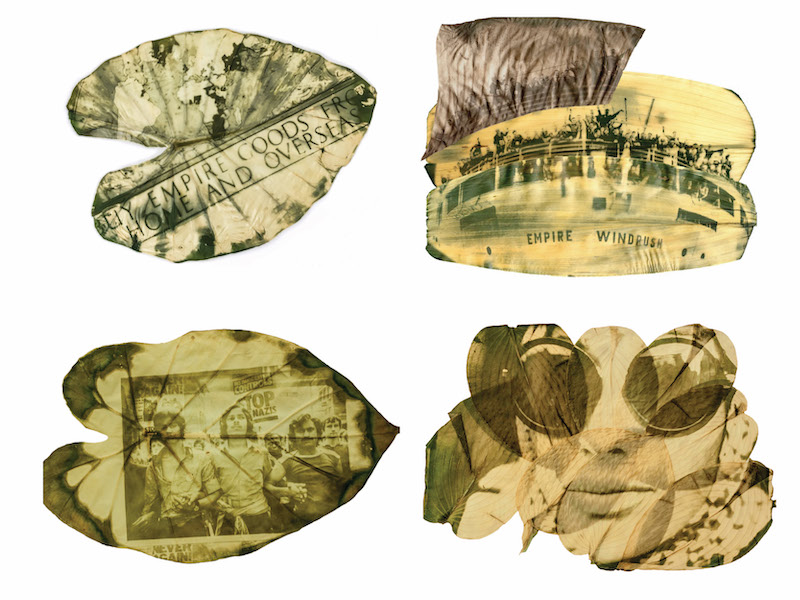
Works from the Growing Concerns series
In January, we had the opportunity to bring some of the “silver gelatin prints” from your About the Thamesmead Chapter series with us to the London Art Fair. How did you go about making those?
I am very thankful that Bow Arts gave me the chance to share this work in London as it reflects on my experiences as an artist living in Thamesmead, in the southeast of the city.
The About the Thamesmead Chapter is a series of silver gelatin prints (standard black and white photographic paper), which I have manually processed in a photographic darkroom. However, instead of producing the usual black and white prints, I alter their development so the white areas of the print become silver mirrors. Photographic paper has silver in it and I use the silver to produce a mirror and make reflective photo-mirrors that echo my experience of living in Thamesmead as a self-reflective and introspective journey. By using this printing technique, I’ve made it so that the viewer can only encounter the images of Thamesmead while seeing their own reflection on them.
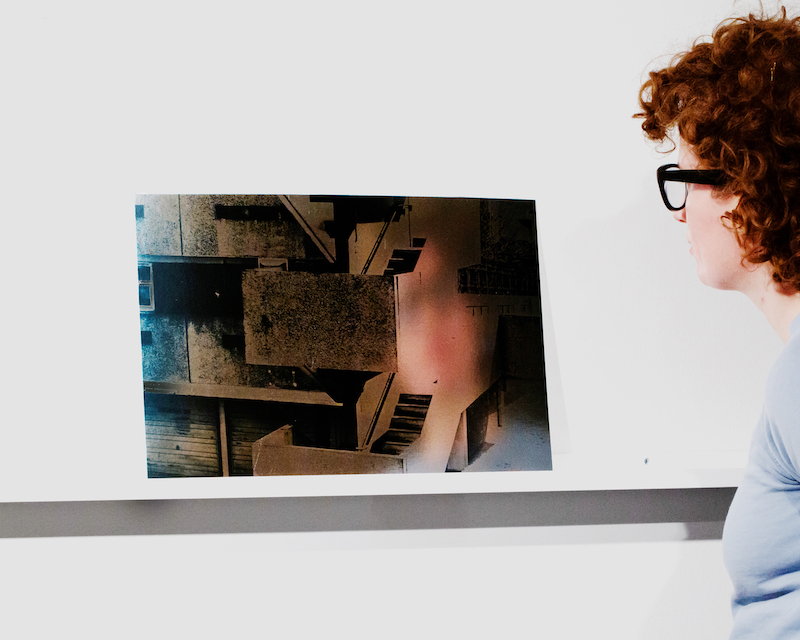
#27, from About The Thamesmead Chapter series
What environment do you usually work in and since the lockdown has been in place how have you adapted your working environment?
Before the Coronavirus crisis, I used to work in my studio where I have all my specialist equipment and materials and I was producing pieces for exhibitions, fairs, commissions and teaching face-to-face workshops. The outbreak has meant that I can’t do any of these, so I have started to look at ways I can share my practice online and reach new audiences. This led me to convert the studio and my living room into an online learning facility.
It initially surprised me how popular the chlorophyll printing video was, but by reading the comments I understand that this way of working with photography is an eye-opening experience. So, this is what I am going to focus on—promoting a broader understanding of the possibilities of the photographic medium amongst home-based audiences. I will share knowledge on fascinating processes that people have probably never heard before, and that they can easily practice at home.
How can people support you and your practice at this time?
One easy way to support my practice and research is to subscribe to my Youtube channel. This way I’ll know there is interest for more content.
Another way is to follow my updates on Instagram. I will be uploading pieces from the Thamesmead series as part of the #artistsupportpledge initiative.

#22, from About The Thamesmead Chapter series
What are your future plans and what message would you like to share with others?
While physical events and activities are restricted, I am going to keep raising interest and support for my practice via online means.
From my perspective, this is a time when there is more need for art, rather than entertainment, than ever before. Entertainment is functional when we need a distraction from our busy lives, but these are hard times when many people are dealing with loss, frustration, existential anxieties, loneliness and other very difficult situations and contexts. All arts, be that performing, literary, visual or any other form, provide us with a focus–another dimension that makes life actually interesting. Could anyone deal with this Coronavirus chaos without music, books, cinema, dance, etc? We all know how important art is–support and share it.
Where should people go to find out more about your work?
You can find more about my work on my website www.almudenaromero.co.uk, social media and Youtube channel too.

